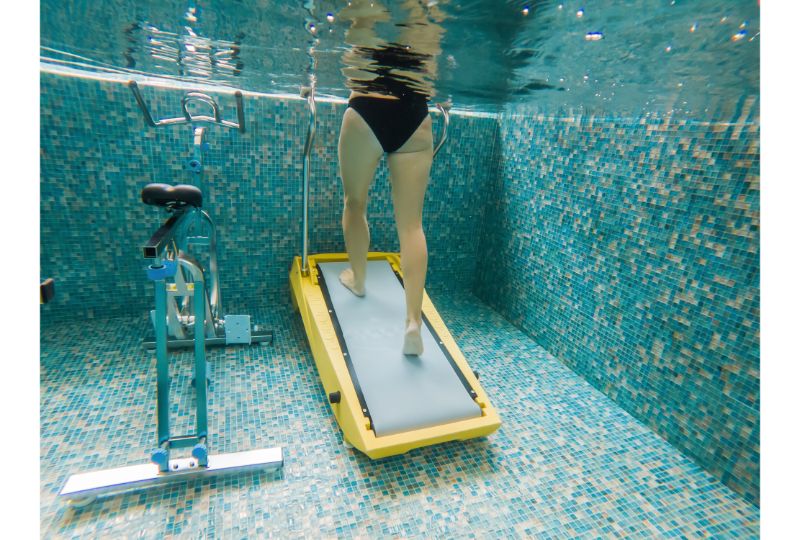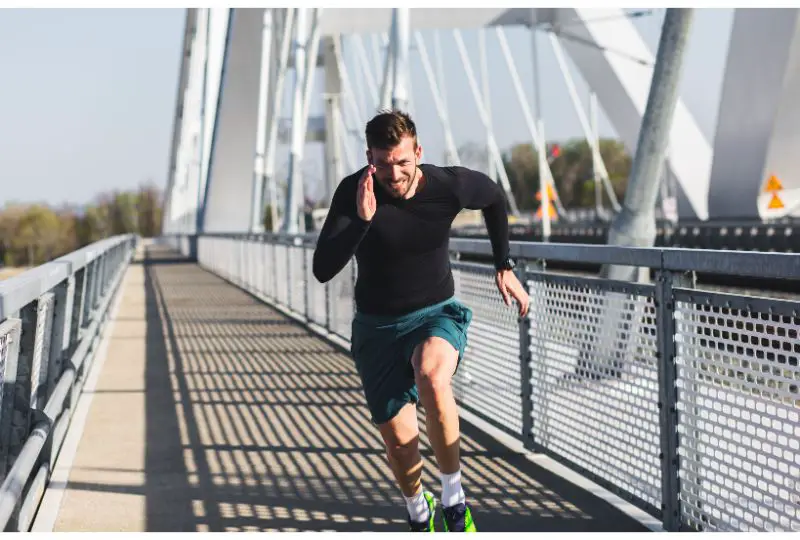How To Breathe While Jogging For Beginners
This page contains affiliate links. As an Amazon Associate I earn from qualifying purchases.
Understanding how to breathe as you run is among the most crucial things you need to do as a jogging beginner. When I initially began jogging, I struggled to get my breathing under control. Without knowing the correct breathing techniques, it was difficult for me to jog as best and comfortable as possible.
After understanding several breathing exercises for jogging, it became my preferred exercise to get my heart rate pumping. Are you searching for secrets on proper breathing as you jog? Look no further, as we will highlight the best techniques and tips in the article below.
Quick Navigation
Three Breathing Techniques For Joggers
Deep Belly Breathing
It would be best to always use diaphragmatic breathing (deep belly breathing) instead of chest breathing as you jog. Diaphragmatic breathing is among the best techniques to breathe as you jog since it facilitates optimum oxygen intake, whereas shallow chest breathing could cause a shortage of breathing.
While breathing with the belly, you utilize your lungs’ full capacity, and the air can stay at the lower portion of the lungs for extended periods. This boosts your oxygen intake, letting you breathe easier. In addition, diaphragmatic breathing helps maintain relaxation, reducing fatigue to enable you to jog for extended periods.
Combustion Breathing
Using this breathing technique, you breathe in and out simultaneously through the mouth and nose. This should be your aim as you jog. Relax the cheeks and slightly part the lips to boost your oxygen outtake and intake.
Rhythmic Breathing
In rhythmic breathing, a rhythm is created between how you run (running gait) and your breathing. It characterizes the number of foot strikes you make as you inhale and the number of steps as you exhale. For instance, if you inhale for three strides and exhale for another three strides, you have a 3:3 breathing pattern. This is ideal if you are a jogging beginner.
Your precise ratio depends on several factors, such as training intensity and your preferences. Therefore you need to find what is efficient for you. At first, this might be a challenge to master. However, there are many benefits associated with rhythmic breathing, like getting extra oxygen to the muscles, focusing on improvement, and boosting your respiratory efficiency.
Mouth Breathing Compared With Nose Breathing: What Should You Know?
The debate of mouth nose breathing versus mouth breathing is quite enormous. However, the fact is, you are required to breathe via both your mouth and nose as you jog. Below are a couple of insights into the essence of breathing both ways as you jog.
It may not come as a surprise to many, but your body is designed to breathe through the nose. The nose is a part of the respiratory system, ensuring better oxygen absorption and blood flow for you to concentrate on breathing via the nose efficiently and correctly.
Because the nose is smaller than the mouth, greater air pressure is created, and a slower exhalation as you breathe in. This gives time for the lungs to remove a larger oxygen amount. In addition, the nose has a nervous system linked to the lungs and heart. Therefore when your breathing through the nose is not correct, it can change the blood pressure and heart rate. In addition, it may make you more susceptible to stress.
However, your focus should not be solely on nose breathing as you jog. Mouth breathing is instrumental in helping you jog properly. As you jog, the muscles require oxygen, and the nose cannot provide sufficient oxygen. Mouth breathing is necessary to inhale more oxygen, so ensure you breathe via your nose and mouth to fulfill your body requirements while jogging.

Three Beginner Jogger Breathing Exercises
If you wish to practice proper breathing as you start jogging, below are some exercises to help you.
Deep Belly Breathing Exercise
Lie on the sofa, bed, or floor while placing your hands on the stomach. Take deep breathes in and out into the stomach instead of the chest. You should see the up and down movement of your hand. Concentrate on trying to breathe out all the air from the lungs, and just like that, you become a deep belly breathing expert!
Combination Breathing Exercise
Upon mastery of the deep belly breathing technique, you can now advance to combination breathing. To train in this, inhale and exhale through the mouth and nose simultaneously all day long. Bear in mind that your lips should be parted slightly and the cheeks relaxed to facilitate optimum oxygen outtake and intake.
Rhythmic Breathing Exercise
Rhythmic breathing is somehow different in that significant practice goes into perfecting it, but it is nothing you cannot accomplish through practice. The best rhythmic breathing exercise starts by walking and inhaling for three strides, exhaling, and making three more strides if you aim for a 3:3 breathing pattern.
Upon getting comfortable with the walking pattern, you can then advance to jogging. Do this gradually, trying it for a minute or two with concentrated effort, then taking a break and working up this time as you become more comfortable.
Tips For Treating And Avoiding A Side Stitch As You Jog
Side stitches are stabbing pains below the ribs that happen when you are jogging. They are usually prevalent in beginners, and therefore we have compiled tips and secrets to avoid and remedy them.
Correct Breathing
Concentrate on your breathing as you jog. Correct breathing will lead to respiratory and diaphragm muscle relaxation, and rhythmic breathing and deep breathing help avoid side stitches.
Relax
Suppose you experience a side stitch approaching, tone down your jogging pace, or begin walking for some time. This helps relieve the side stitch, enabling you to resume your pace.
Use The Hand
Apply pressure to the region you are experiencing the stitch using the hand. Press the painful part down while exhaling, and ensure you take deep breathes for the best outcome.
Pause For Some Time And Stretch
If walking or slowing down does not help, pause momentarily and stretch to ease the tension. Try to lean the upper body to either side, stretching more every time you breathe out.
Conclusion
If you are a beginner at jogging, employ these breathing techniques and tips to begin on the right note. Correct breathing could be all the difference you need for a better jog. Therefore, ensure you practice these jogging exercises and techniques.



